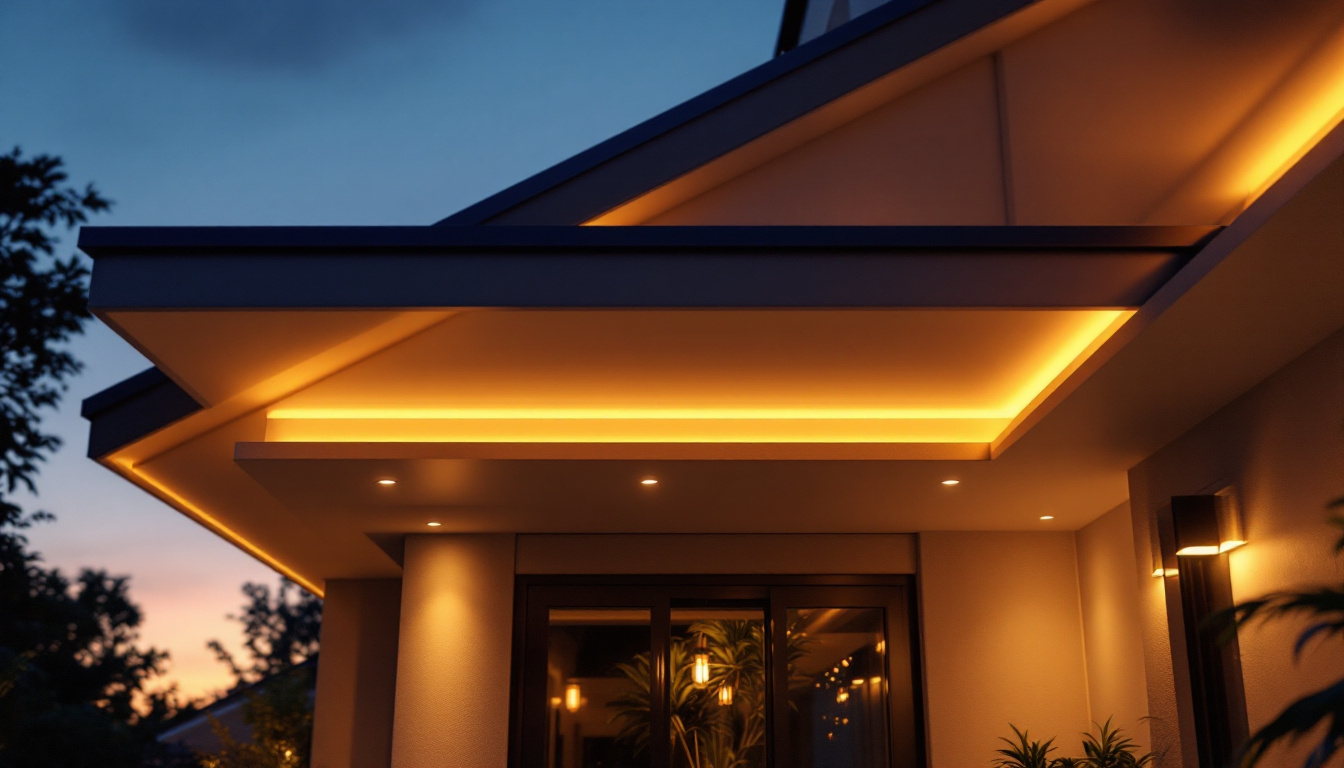
In the realm of lighting design and installation, backup lights play a crucial role in enhancing safety and visibility. Whether in residential, commercial, or industrial settings, understanding the nuances of backup lighting can significantly impact project outcomes. This article delves into expert insights shared by seasoned lighting contractors, offering valuable information on the importance, types, installation considerations, and maintenance of backup lights.
Backup lights serve a critical function, particularly in areas where visibility is paramount. They not only illuminate dark spaces but also enhance safety for pedestrians and vehicles alike. The presence of backup lights can reduce accidents and improve overall security in various environments.
One of the primary reasons for installing backup lights is to enhance safety. In settings such as parking lots, warehouses, and loading docks, proper illumination can help prevent accidents. When vehicles are reversing, backup lights provide essential visibility, allowing drivers to see obstacles and pedestrians. This added layer of safety is vital in high-traffic areas. Moreover, the psychological effect of bright lights can also play a role in safety; the more visible a vehicle is, the more cautious pedestrians and other drivers tend to be, creating a safer environment for everyone involved.
In addition to safety, backup lights improve visibility during low-light conditions. Whether it’s dusk, dawn, or inclement weather, effective backup lighting ensures that spaces remain navigable. This is particularly important for commercial properties where customer safety is a priority. Well-lit areas can also deter crime, making properties less attractive to potential wrongdoers. Furthermore, backup lights can be particularly beneficial in rural or less populated areas where street lighting may be minimal. In these locations, the ability to see clearly while reversing can make a significant difference, helping drivers avoid hidden hazards such as ditches or wildlife that may not be immediately visible without adequate lighting.
Understanding the various types of backup lights available is essential for lighting contractors. Each type has its unique features, advantages, and applications. Selecting the appropriate backup light can significantly influence both functionality and aesthetics.
LED backup lights have gained popularity due to their efficiency and longevity. These lights consume less energy compared to traditional incandescent bulbs, resulting in lower electricity costs. Additionally, LEDs have a longer lifespan, which reduces the frequency of replacements. Their bright, white light enhances visibility, making them an excellent choice for both residential and commercial applications. Furthermore, many LED backup lights come with adjustable brightness settings and color temperature options, allowing for customization based on specific needs and preferences. This versatility makes them particularly appealing for diverse environments, from warehouses to home garages, where different lighting conditions may be required.
Halogen lights are another option that contractors often consider. They provide a warm light that can enhance the ambiance of outdoor spaces. While halogen lights are less energy-efficient than LEDs, they offer excellent color rendering, making them suitable for applications where color accuracy is essential. However, their shorter lifespan and higher heat output should be taken into account when choosing this type of lighting. Additionally, halogen lights can be dimmed, providing flexibility in creating the desired atmosphere. This feature is particularly useful in settings such as patios or outdoor dining areas, where the lighting may need to be adjusted for different occasions, from casual gatherings to formal events.
Though less common in modern installations, incandescent backup lights still have their place. They are typically less expensive upfront, making them an attractive option for budget-conscious projects. However, their energy consumption and shorter lifespan compared to LEDs and halogens make them a less favorable choice in the long run. Contractors should weigh the initial cost against long-term efficiency when considering incandescent options. Moreover, incandescent lights can create a soft, inviting glow that many homeowners find appealing, particularly in residential settings. This characteristic makes them a popular choice for indoor applications, such as hallways and living rooms, where a warm and cozy atmosphere is desired. Despite their drawbacks, the nostalgic charm of incandescent lighting continues to resonate with certain clientele, making them a viable option in specific contexts.
Proper installation of backup lights is crucial for maximizing their effectiveness. Lighting contractors must consider various factors, including placement, wiring, and compliance with local regulations. Each of these elements plays a vital role in ensuring that backup lights function optimally.
The placement of backup lights is essential for achieving the desired illumination. Contractors should assess the specific needs of the area, taking into account factors such as traffic flow, potential obstacles, and the height of surrounding structures. Ideally, backup lights should be positioned to provide maximum coverage without creating glare or shadows. This careful consideration can significantly enhance safety and visibility. Furthermore, it is beneficial to conduct a light distribution analysis, which can help in determining the most effective angles and distances for installation. By utilizing tools such as photometric studies, contractors can predict how light will spread across the designated area, ensuring that no dark spots remain that could pose a hazard during nighttime operations.
Wiring is another critical aspect of backup light installation. Contractors must ensure that the electrical system can handle the load of the backup lights while adhering to safety standards. Proper wiring techniques should be employed to prevent overheating and electrical failures. Additionally, using weather-resistant materials is essential for outdoor installations to withstand environmental conditions. It’s also important to consider the type of power supply being used; for instance, LED backup lights may require different wiring configurations compared to traditional incandescent bulbs. Moreover, integrating smart technology can enhance the functionality of backup lights, allowing for features such as motion detection and remote control, which can further improve safety and energy efficiency.
Local building codes and regulations must be considered during the installation of backup lights. Contractors should familiarize themselves with the specific requirements in their area, including zoning laws and electrical codes. Compliance not only ensures safety but also protects contractors from potential liabilities. Failure to adhere to regulations can result in costly fines and project delays. Additionally, it is advisable for contractors to stay updated on any changes in legislation that may affect installation practices. Engaging with local authorities or industry groups can provide valuable insights into best practices and emerging standards, ensuring that installations remain compliant and up-to-date with the latest safety protocols. This proactive approach not only safeguards the project but also enhances the contractor’s reputation within the community.
Regular maintenance is vital to ensure that backup lights continue to function effectively over time. Neglecting maintenance can lead to reduced performance and increased safety risks. Lighting contractors should establish a maintenance schedule to address potential issues proactively.
Conducting routine inspections is an essential part of backup light maintenance. Contractors should check for any signs of wear and tear, such as flickering lights or damaged fixtures. Identifying issues early can prevent more significant problems down the line. During inspections, it is also crucial to clean the fixtures to ensure optimal light output.
Over time, bulbs and other components may need to be replaced. Contractors should keep track of the lifespan of the bulbs installed and replace them as needed. Utilizing high-quality components can extend the life of backup lights and reduce the frequency of replacements. Keeping an inventory of replacement parts can streamline the maintenance process and ensure that repairs are made promptly.
As technology advances, upgrading backup lights can enhance performance and efficiency. Contractors should stay informed about the latest lighting technologies, such as smart lighting systems that can be controlled remotely. Implementing these upgrades can improve energy efficiency and provide added convenience for property owners.
Lighting contractors can benefit from adopting best practices when it comes to installing and maintaining backup lights. These practices not only improve the quality of work but also enhance customer satisfaction.
Effective communication with clients is crucial. Contractors should take the time to understand their clients’ needs and preferences regarding backup lighting. Discussing options, benefits, and potential challenges can help clients make informed decisions. This collaborative approach fosters trust and can lead to repeat business and referrals.
The lighting industry is constantly evolving, with new technologies and trends emerging regularly. Contractors should invest time in continuing education and training to stay updated. Attending workshops, trade shows, and industry conferences can provide valuable insights into the latest innovations and best practices.
Networking with other professionals in the lighting industry can be beneficial for contractors. Establishing relationships with suppliers, manufacturers, and fellow contractors can lead to valuable partnerships and opportunities for collaboration. Sharing knowledge and resources can enhance the overall quality of service provided to clients.
Backup lights are an essential component of effective lighting design and installation. Understanding their importance, types, installation considerations, and maintenance practices is crucial for lighting contractors. By adopting best practices and staying informed about industry trends, contractors can enhance their expertise and provide superior service to clients.
As the demand for efficient and effective lighting solutions continues to grow, the role of backup lights will remain significant. By prioritizing safety, visibility, and compliance, lighting contractors can ensure that their projects meet the highest standards of quality and performance.
Incorporating expert insights into everyday practices not only benefits contractors but also contributes to safer and more illuminated environments for everyone. Embracing the evolution of lighting technology and maintaining a commitment to excellence will pave the way for success in the lighting industry.
Ready to elevate your lighting installations with the highest quality backup lights on the market? Look no further than LumenWholesale. Our selection of spec-grade lighting products is designed to meet the rigorous demands of any project, ensuring safety, visibility, and compliance. With unbeatable wholesale prices and the convenience of free shipping on bulk orders, you can trust LumenWholesale to provide the best value without any hidden fees. Make the smart choice for your lighting needs and experience the best in wholesale lighting today.

Discover how incorporating roof overhang recessed lights can enhance your lighting installation projects.

Discover how 4 recessed LED downlights can transform your business with increased efficiency and profits.

Discover the hidden details lighting contractors frequently miss about shatterproof bulbs.

Discover the key challenges lighting contractors face when installing LED solar outdoor lights.